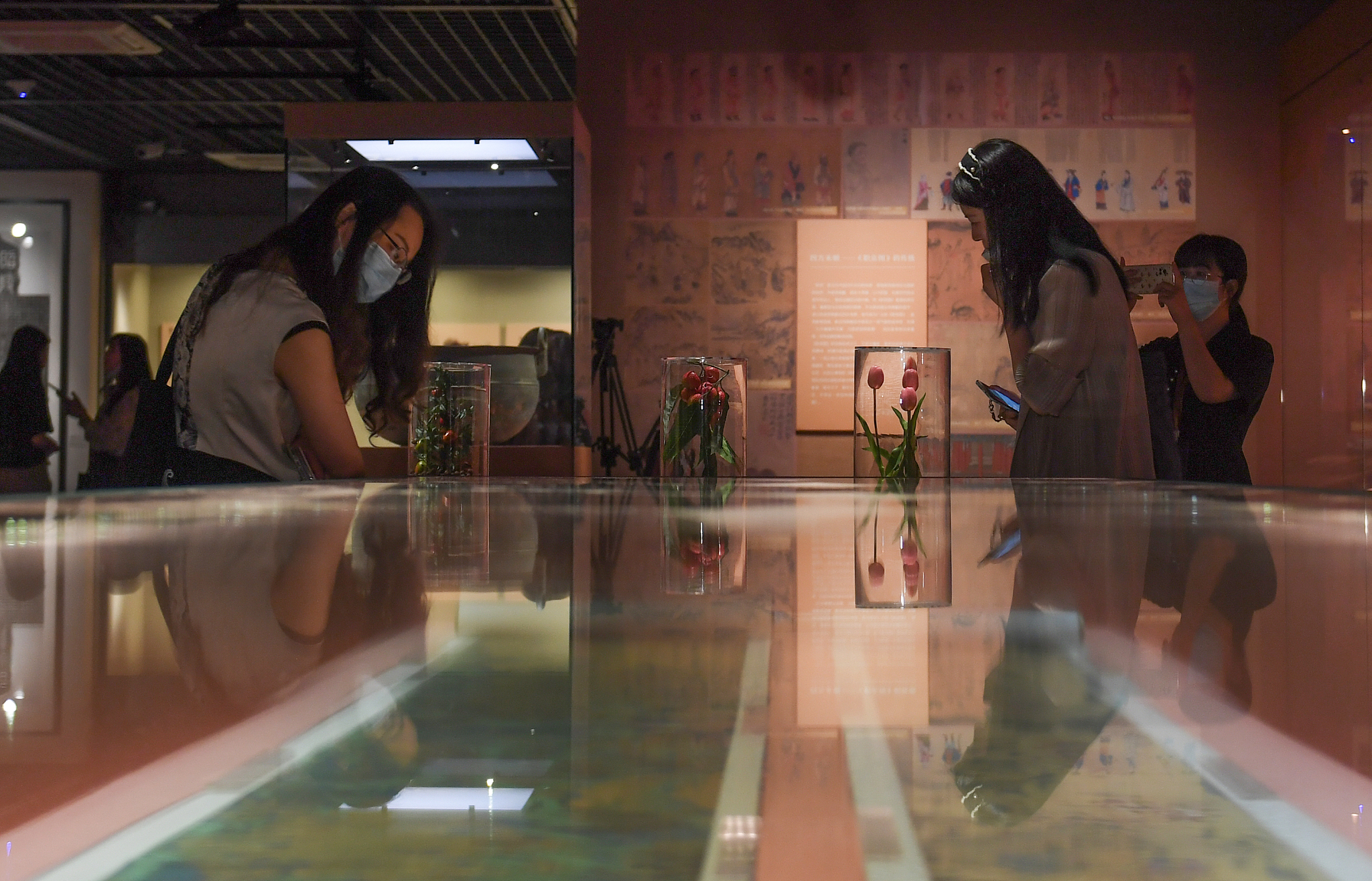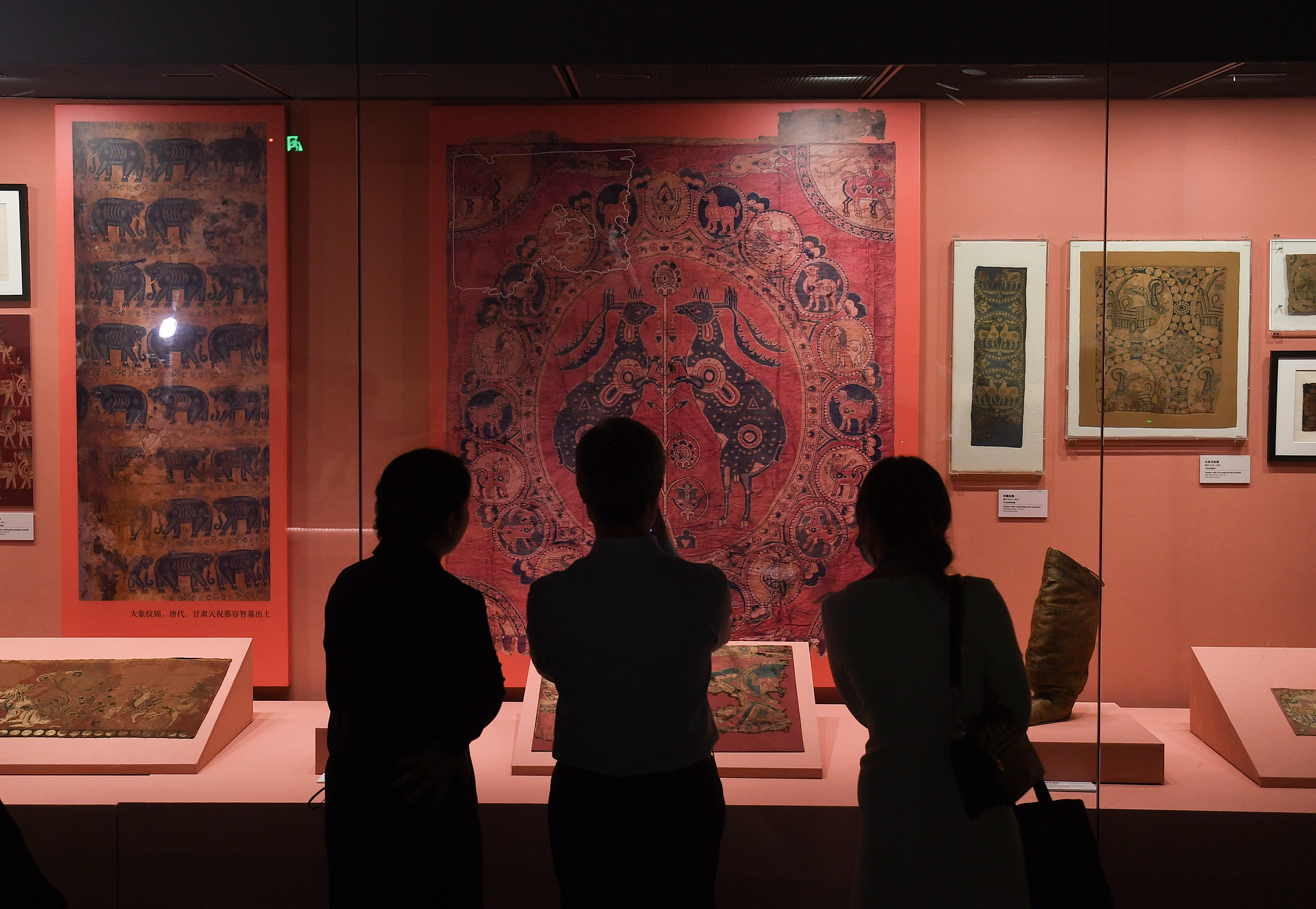A report, compiled by more than 30 global experts, has deemed the 2020 archaeological findings related to the Silk Road to be remarkable despite the COVID-19 pandemic.
The report, led by the international Silk Road and intercultural exchange research center of the China National Silk Museum, was released at the opening of 2021 Silk Road Week in Hangzhou on Friday.
The report has four categories: Silk Road-themed archaeological discoveries, exhibitions, academic publications and cultural activities. The first category lists a total of 42 archaeological discoveries related to the Silk Road made in 2020.

Visitors enjoy the paintings on display of exhibition "Creatures: Animals and plants along the Silk Road" in Hangzhou, east China's Zhejiang Province on June 18, 2021. /CFP
Visitors enjoy the paintings on display of exhibition "Creatures: Animals and plants along the Silk Road" in Hangzhou, east China's Zhejiang Province on June 18, 2021. /CFP
Most of the new achievements have been made in China, particularly in ancient cities in Xinjiang. The discovery of evidence of early silkworm breeding in China's central plains and new discoveries of tombs on the Qinghai-Tibet Plateau were among the highlights of the year.
An exhibition named "Creatures: Animals and plants along the Silk Road" also opened in China National Silk Museum at the same day, as a part of the 2021 Silk Road Week events.
"Before Zhang Qian's journey to the western regions, on the so-called Silk Road, people began to have cultural exchanges and the exchange of animal and plant species were also important ways to communicate," said Zhao Feng, the director of China National Silk Museum at the exhibition.

Visitors look at "Creatures: Animals and plants along the Silk Road" exhibits in Hangzhou, east China's Zhejiang Province on June 18, 2021. /CFP
Visitors look at "Creatures: Animals and plants along the Silk Road" exhibits in Hangzhou, east China's Zhejiang Province on June 18, 2021. /CFP
"The Han (202 B.C.-220 A.D.) and Tang Dynasties (618-907) were the most significant and frequent periods for the spread of plant and animal species between the East and the West along the Silk Road," Zhao added.
Exchanges and mutual learning have enriched civilizations, said Zhao Shengliang, director of Dunhuang Academy China. "As a major artery of cultural exchange between the East and the West in ancient times, the Silk Road is also of great significance today," said Zhao.
To strengthen the protection of Silk Road cultural heritage, the International Association for the Study of Silk Road Textiles and the Chinese Museums Association's Committee of Museums along the Silk Road decided in 2019 to hold an annual Silk Road Week every year. The event runs from June 18 to 24.
(With input from Xinhua News Anency)
(Cover image: A visitor takes a picture of one exhibit during the 2021 Silk Road Week's opening in Hangzhou, east China's Zhejiang Province on June 18. /CFP)

